Malo e lele! Welcome to the friendly islands of the Kingdom of Tonga.
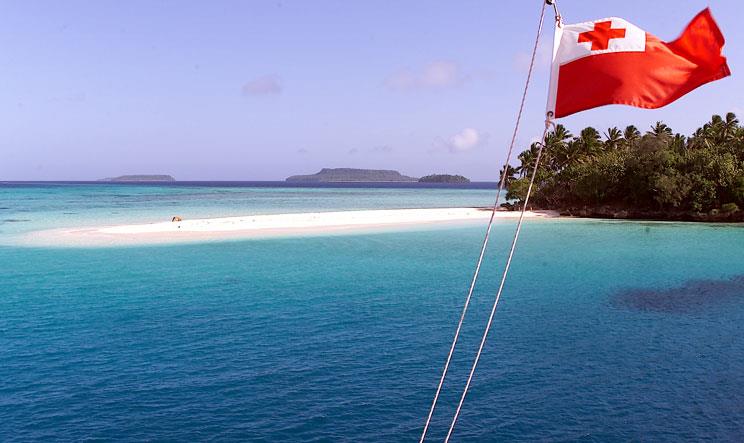
The Tongan Flag. Image courtesy of ms-starship
There are about 171 islands in the three main island groups of Tongatapu, Ha’apai, and Vava’u. Tonga has the distinction of being the only island nation that was never formally colonized by a foreign power and it is the last remaining monarchy in Polynesia. Many years ago, Tonga was given the nickname of the friendly islands because of the welcoming and congenial attitude shown to visitors. Today, tourism is increasing in Tonga as people travel to spear fish, whale watch, and enjoy the beautiful landscape.Looking around a traditional Tongan village, you will notice that many of the structures are shaped similarly to Samoan houses and other buildings in Polynesia.
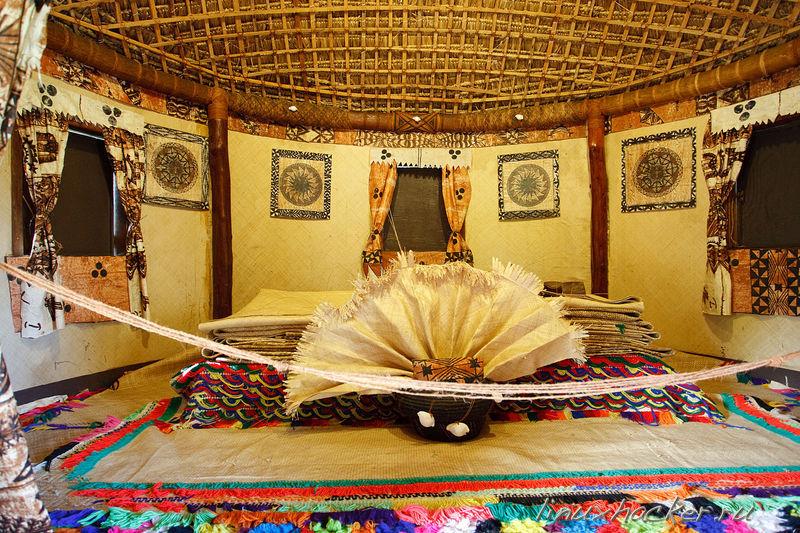
The Fale Fakatu’i or Queen’s House. Image courtesy of linuxhacker.ru
A prominent feature of the Tongan village in the Polynesian Cultural Center is the Queen’s Summer House called the Fale Fakatu’i. The house is intricately decorated. Dried coconut leaves are covered with fine mats to make the floor soft. The structure was built by the personal workmen of the beloved Queen Salote, who said that if a queen of any nation visited the village, she would have a place to rest inside the Queen’s Summer House. The Crown Prince of Tonga represented the royal family at the dedication of the house in 1963.
Another important Tongan tradition is the Kava ceremony, which has been part of Tongan culture for more than two thousand years! Performing the ceremony for someone was a sign of great respect and honor.
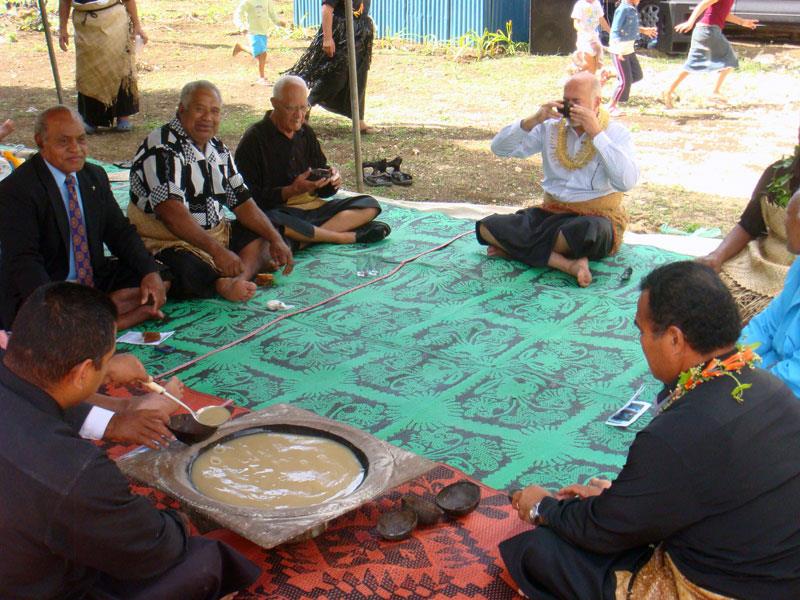
Tonga Kava Ceremony. Image courtesy of foreignminister.gov.au
The drink is made from the root of a type of native pepper plant. The inner core of the roots are pounded into a powder, which is then mixed with water in a special wooden bowl called a kumete. The liquid is strained with hibiscus fiber before being served in a half coconut shell cup. The drink is non-alcoholic and doesn’t cause hangovers, but it does contain a mild narcotic that induces a feeling of restfulness. Kava is sometimes called the official drink of the Pacific because similar ceremonies and traditions are found throughout the Pacific islands.
Traditional Tongan cooking is often done in an underground oven called an ‘Umu. This type of cooking is physically demanding and is usually the men’s responsibility.
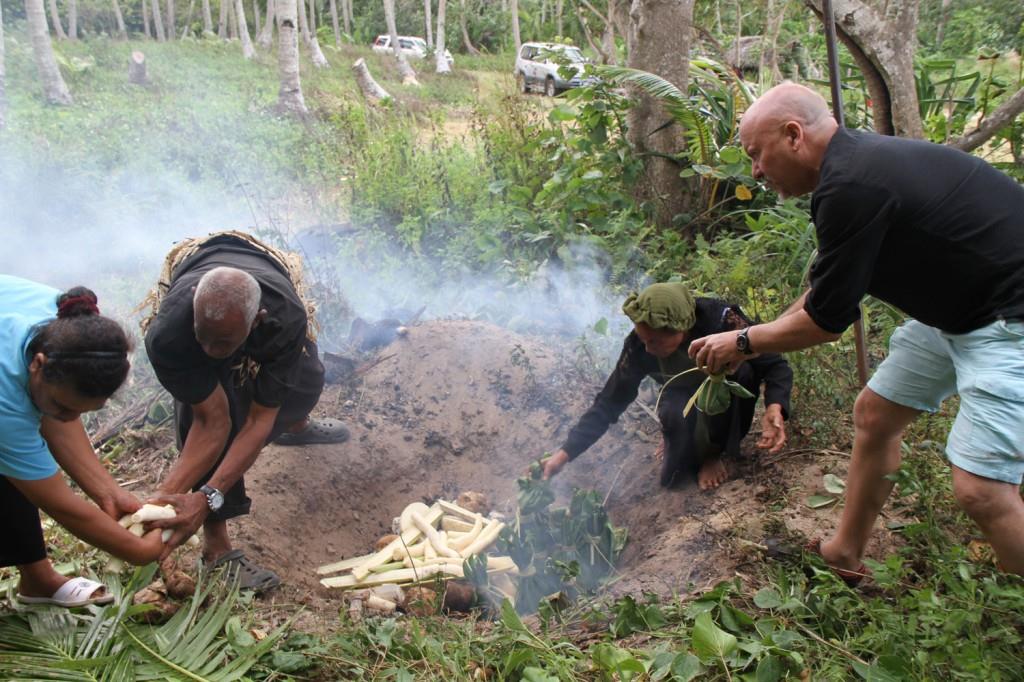
Tongan umu or underground oven. Image courtesy of realpasifik.com
The first steps of cooking in an ‘umu are digging a bowl shaped pit and gathering large rocks and dry firewood. The men start a fire in the pit and cover it with stones. Banana tree stumps are layered over the hot rocks to keep the food safe from intense heat and also provide steam. All varieties of food are placed in the oven, including pork, chickens, fish, taro, breadfruit, and tapioca just to name a few. The food is covered with banana leaves and then the entire oven is covered with soil to keep the heat and steam inside. The ‘umu is usually started early in the morning and the food cooks for several hours until the main meal of the day is served at noon. Enough food is prepared to last for the entire day!
In a Tongan village you will likely hear a distinctive tapping sound. This is the sound of making tapa cloth, a prized art of the women of Tonga.

Tongan women making tapa. Image courtesy of iub.edu
What you are hearing is the impact of a small wooden mallet, called an ike, that is used to pound the inner bark of the paper mulberry tree. The bark begins as a thin strip, but after about 45 minutes of continuous pounding it thins and widens to about 8 inches wide. After the strips are dried in the sun, they are glued together lengthwise and crosswise with a special glue made from boiled tapioca.
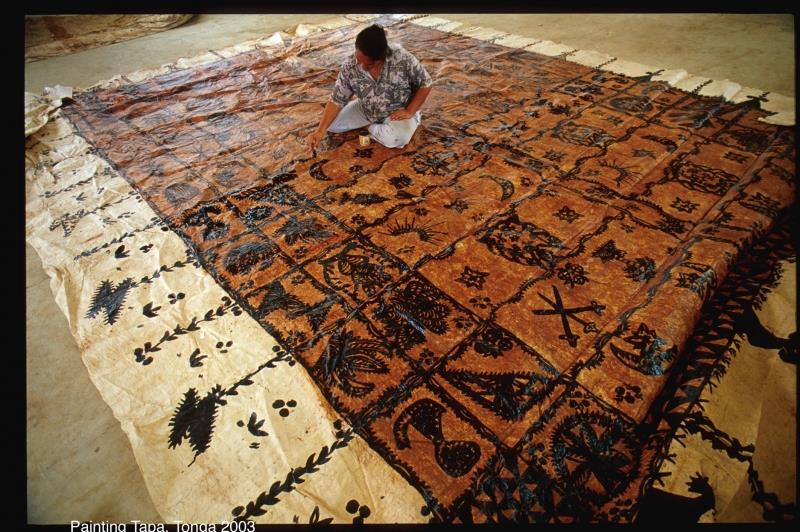
The Art of Tapa. Image courtesy of Glenn Jowitt
Natural black and brown dye are applied to the tapa cloth to make intricate patterns for a stunning finished product that can be several yards long. Tapa is still actively made by groups of women in Tonga today. The cloths are valuable gifts given and received on special occasions and are used beautiful decoration and clothing.
Story by Erin Baker
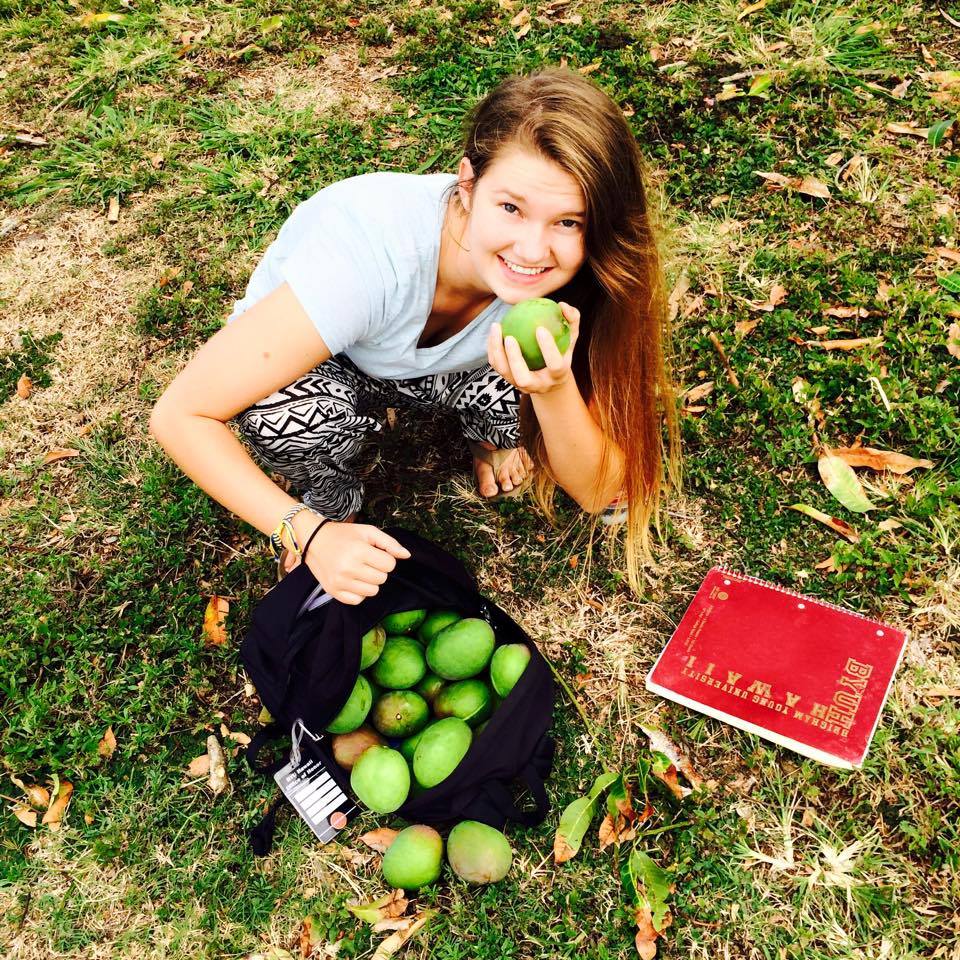
I am from Salt Lake City, Utah. I am studying Intercultural Communications at Brigham Young University Hawaii. Attending BYU Hawaii was always a dream for me and I value the diverse community of the campus. I am so lucky to attend this special school. Giving tours at the PCC was amazing because I love the details of the unique cultures represented in the villages. The music, art, dances, and languages of Polynesia are vibrantly alive at PCC and I take every chance I can to be a part of it. I worked at the Polynesian Cultural Center in the past, and now I work at the Reading Writing Center on campus.

Recent Comments